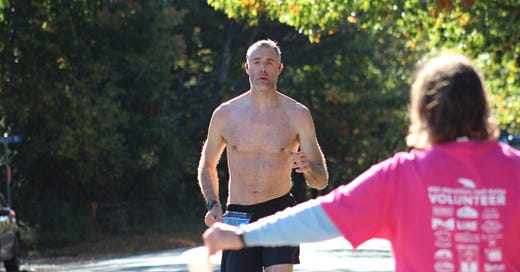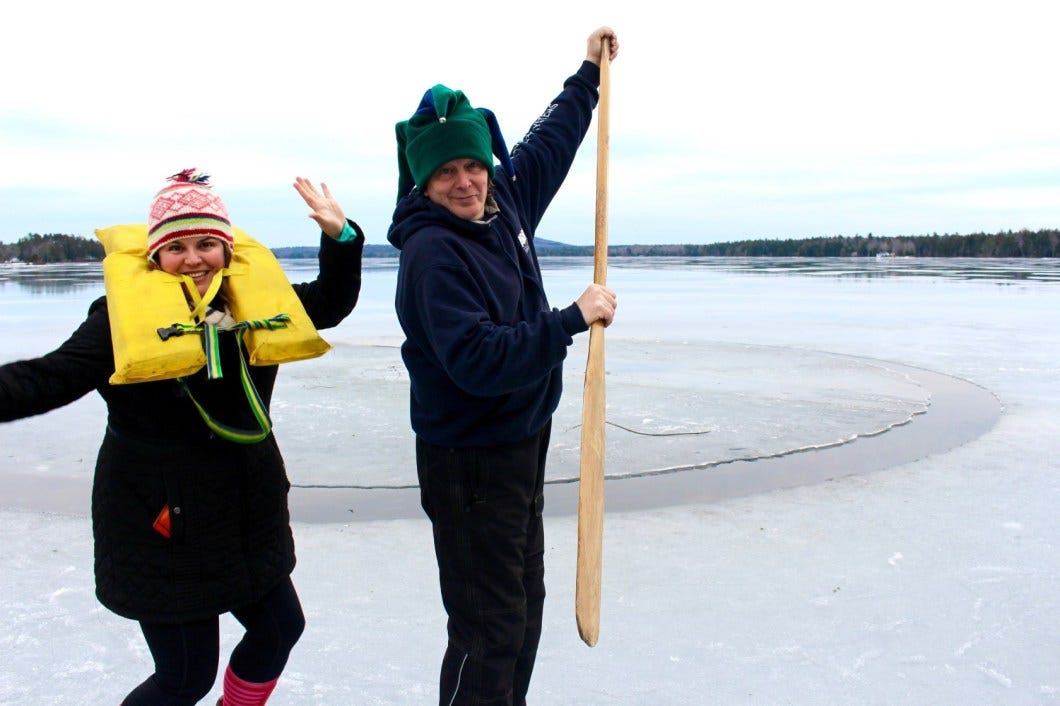Where I live, my friends are weird and tourists visit. A lot. They fly or drive and ramble through our national park hitting the TOP TEN DESTINATIONS OF ACADIA NATIONAL PARK and when we meet them at our comedy club or at a restaurant, they’ll brag about seeing the sunrise on Cadillac Mountain, about having pop-overs at Jordan Pond, about driving the Park Loop Road and seeing Thunder Hole.
Don’t get me wrong. All of that is awesome.
But what mostly happens, is that the tourists almost always say, “I love it here. I think we’ve seen everything, right?”
And I never know if I should tell them the truth, that ‘No, you haven’t seen everything. You’ve seen the tourist things at one brief moment in time. You haven’t seen winter. You haven’t seen our bed races or our cantankerous town meetings. You haven’t seen volunteers spend a day giving out water to marathon runners with no goal other than to help. You haven’t seen the volunteer firefighters get up at 2 a.m. to put out a fire or respond to a car accident and then witnessed them stand in sub zero weathers for hours to keep a road closed. You haven’t seen a talent show at the grammar school. You haven’t seen a fist fight on Main Street after bar close.”
Okay. Maybe they’ve seen that.
Where I live people tell stories of bad parking jobs, winters where there were no snow, winters where there were 500 feet of snow, about times when a girl was crushed by a boulder that she and her friend had been jumping on and somehow dislodged. The friend survived because her petticoats got caught in a tree. She dangled all night before rescue came.
People here tell stories of jumping off docks, parties in fishing shacks with cheap beer they stole from convenience stores. These stories? They are lullabies and mantras, ways that they rock themselves to solace because the past is over and the future can sometimes be scary, but story – stories – you can craft and shape and collect.
People here tell stories and create them every winter, clustering together in small groups and large, fortifying themselves with bonfires and wood stacking, community theater and random nights out at the few restaurants that stay open all year. Sometimes, I think we might actually worship those few restaurants for being there and supporting a community where the numbers dwindle every year.
And there are places and movements to remember and try to retain the stories of people who were here before this town was called Eden. Part of the Abbe Museum’s mission is to remind us that “Maine is a Wabanaki place.”
And people here complain. They complain about a lack of housing, about a dock, about taxes, about politicians. They make petitions and protest and worry. And it’s all good, because it means they care enough to complain, to protest, to make a petition.
The tourists don’t get to see that. And I am sad for them. But I’m also sad for me – for all the places that I visit and don’t get to really see and experience because I won’t get to spend even a year there, because I might not venture off a well-beaten tourist path and really breathe in a place. Because I won’t get to see the beloved stories of a town or a city or a country and hear what makes a place real. And because some of those stories of the past, of other cultures before, aren’t sung out as loudly as other stories.
What makes a place real isn’t buying a t-shirt or getting a meal at TripAdvisor’s #1 ranked restaurant, although those things are fun.
What makes it real is something that moves and breathes and changes. Because what makes it real are its people and how they interact with place and with each other. I feel so lucky whenever I get to get a glimpse of that. I hope you do, too.









